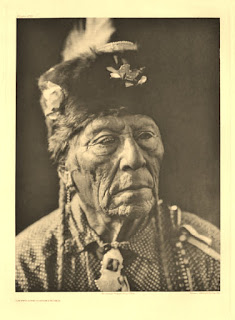On Thursday 8th November Paul Weaver the award winning Bristol artist gave a demonstration to Avon Valley Artists, 21 members present. Paul, who was very successful at the prestigious Bath Prize last year, has a growing reputation, which is beginning to extend beyond Bristol, Bath and the surrounding area.
Paul paints in the traditional English style and specializes in landscapes and other outdoor scenes with buildings. On this occasion he was asked to do a demonstration painting of the Bristol dock area.
Paul began as a landscape artist and studied initially - like so many others -with Ron Ranson. The artists mentioned he particularly admired were David Curtis, John Yardley and Ken Howard. I believe Trevor Chamberlain is another favourite.
Paul trained as a graphic and design illustrator, and told me that drawing was not something stressed in this profession, although most graphic artists do draw well. He still does some graphic work, although now working as a full-time professional..
Preparing for the Demo
Paul getting ready
A selection of photographs on which the painting was to be based.
Using a viewfinder to crop the photograph. As you can see he uses a home made viewfinder in two pieces, which allows greater flexibility in framing the subject. Paul normally uses a viewfinder when painting or sketching outdoors.
Paul started off by making a value drawing on cartridge paper with charcoal.
The value drawing. The advantage of using charcoal is that you can easily correct mistakes or make alterations.
Paul began by taping the paper to the board with masking tape, a roughly half inch overlap. He then made a quite loose and faint drawing. Then using slightly darker pencil marks highlighted the key areas. Paul uses a 4B pencil which is quite soft. He holds the pencil some way from the tip. With such a soft pencil he is careful not to press too hard, and stressed the danger of the harder leads is that the pencil can mark the paper which can cause problems when you apply paint.
He then commenced painting, using primarily neutral colours, Initially he put faint washes over the sky and other areas. He began with darker paint on the area furthest away, then towards the right hand closer buildings. Paul uses wet into wet a lot. Detail is painted with stronger colour when the paper is dry or just damp. He considers value more important than colour.
.
He then painted the wall next to the boat and the dark reflections. We had a recess for tea/coffee and biscuits. The large boat was completed next and then the small one. Finally the reflections and the masts. He lifted out some paint using the dry tip of his brush. The whole painting, took about 11/2 hours, and he was explaining what he was doing pretty much continually - very clear and easy to understand.
Dock Scene 16" x 12" Bockingford 140lb
As there were 30 minutes remaining Paul did a very rapid second study based on a photograph of more boats. He cropped the photograph with his viewfinder and off he went.
You may notice that Paul is left handed and paints using a single brush, which is his own `Paul Weaver' signature brush made for him by Rosemary & Co. I have seen several demos from him going back some years and originally he used the SAA `Whopper', a synthetic brush, an approximately size 30 round. His signature brush has a longer slimmer head which tapers sharply at three quarters of the length. This enables him to use the broad part as a wash brush and the slim tip for detail. It is a size 30 and made from a synthetic fibre slightly firmer than the SAA brush. He sells them for £28.00p
16" x 12" Bocking ford.
The demonstrations were made on Bockingford paper.He uses this for outdoors, where quick working is required, and for demonstrations. His main paper choices are Saunders Waterford which he considers has now been enhanced with the introduction of the `High White' version. He also likes Arches. While he uses Bockingford he said the main fault is that the paint dries faster than on cotton papers. Bockingford is made from high quality treated wood pulp whereas Waterford and Arches are cotton.
Pauls palette comprises approximately 19 colours of Winsor & Newton paints, including a few Cotman colours. It is composed primarily of reds, blues and yellows with warm and cool versions of each. He uses a much smaller number in individual paintings. Colours in his palette include Raw and Burnt Umber, Raw Sienna, Permanent Magenta,Viridian, Blues Ultramarine, Cobalt and Cerulean, Permanent Rose (Cotman), Alazarin Crimson, Light Red, Cadmium Orange, Red, Lemon and Yellow, and Lemon Yellow.
These demonstrations were interesting and informative, enjoyed by all present, regardless of individual styles or medium.. Paul is an excellent demonstrator and clearly explains what he is doing and why. He also told us that he has been making a DVD over the past year with the help of a friend and it was almost finished. His website is
www.paulweaverart.co.uk/ Paul has recently had an article published in the `The Artist' and more will follow.

















































